How to replace an overlock when sewing and how to do it?

An overlock machine is a special machine that is used to overcast the edges of fabrics. But if it is not possible to buy an overlock, then it can be replaced when sewing, because some modern sewing machines are capable of making a pseudo-overlock stitch. It can simulate overcasting on denim, cotton or other fabrics. However, you can replace the overlock when sewing in other ways.
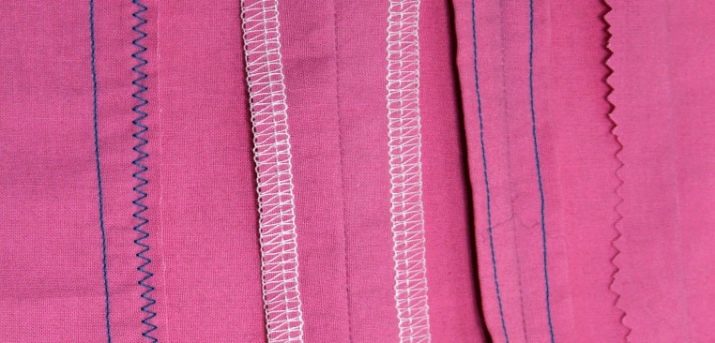
How to replace with a sewing machine?
To do this, it is enough to have a sewing machine and know simple tricks. It is worth considering the options for overcasting that seamstresses use most often.
Zigzag stitch
Almost any sewing machine can perform this stitch. The only drawback is that the appearance of the fabric cuts will not be so neat, but the stitching will still turn out to be even. The width and length of the selected stitch depends entirely on the type of fabric. So, thicker or denser fabrics will be easy to overlay at home. The result should be a pretty nice and neat line.
It is much more difficult to cut the edge of loose fabrics such as chiffon or very fine knitwear. The last option, after overcasting, can not only stretch, but also twist on the cuts. In this case, it is necessary to lay the line at a small distance from the edge, up to 8 millimeters, after which, at the end of the work, the excess fabric just needs to be cut off.

Hem stitch
A fairly easy way to overcast is with a hem stitch. You can cope with the task very quickly using a conventional sewing machine. To do this, it is necessary to bend all the edges of the sections inward, and then iron them well with an ordinary iron. Then you can sew: a regular straight stitch is sewn along each of the folded edges. Wherein it is necessary to ensure that the line runs as smoothly as possible.



"Fake overlock"
Many modern sewing machines can sew stitches that resemble an overlock stitch. First, you need to carefully cut the edges of the fabric with scissors, and then overcast them using the overlock foot. Such a seam will be slightly worse than made on an overlock, but it will still turn out to be beautiful and even.

Oblique binding
This stitching is done using a not too wide strip of another fabric used to close the cut. The adjustable foot adjusts the width of the tape.
Before starting work, it is imperative to measure all the allowances, more precisely, their length, adding another 2 cm to them. After that, you need to buy a bias tape in any specialized store or make it yourself. The tape is fixed in the right place. On both sides, you need to make a 1.5 centimeter fold.

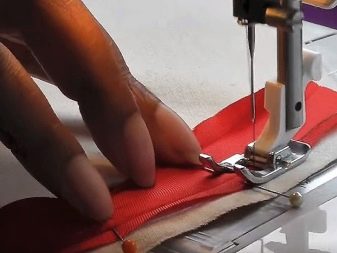
As for the color, then most often the facing is made in contrast. To begin with, the bias tape must be bent so that one half is 2 millimeters wider than the second. After that, you need to sew the inlay exactly along the edge. In this case, it should be pulled a little so that there are no folds.
The second edge is sewn into the seam. As a result, the cut edge will not be visible. In addition, the product will look nice and neat.

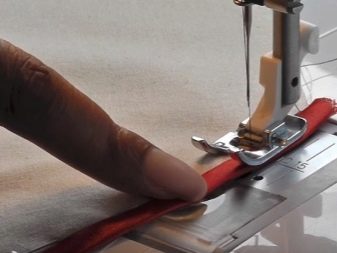
How to overcast edges with hand overcast?
Hand overcasting is only suitable for finishing very thick materials such as rugs or rugs. It is quite hard work and it will be very difficult to achieve the ideal result when working with such bulk material.
Some products do not even need to be overcast - you just need to burn the fabric very carefully.
You can use any sources of fire, the main thing is to do it very carefully.
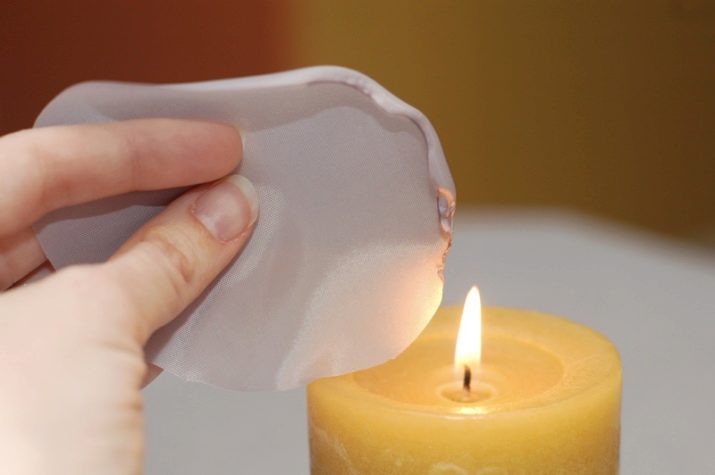
See below for more details.
With a needle
This process is not too difficult and almost anyone can handle it. The fabric should be overcast neatly. To begin with, you need to walk the needle along the bottom edge, sticking it first in one direction and then in the other direction. As a result, you should get an imitation of a seam in the form of a triangle. It is no worse than overlock.
You can also make an overcast with a buttonhole stitch, which is considered one of the most ancient. It was used when there were no cars yet. It can be used to make the edge of the fabric neat. You need to pierce the fabric at an equal distance to make the seam beautiful.


Crochet
Most often, this method of overcasting is used to trim the edges of knitted products. However, those people who are fluent in this technique can use the crochet hook for other fabrics as well. After all, a line made of single crochet looks very neat and clean.

We use special tools
To replace the overlock when sewing, you can use other tools and means, for example, ordinary glue or special scissors.
Zigzag scissors
The use of such a tool is a fairly quick and easy way. Such scissors can be used for fabrics that have little to moderate flowability. However, it is necessary to work with them very carefully so that the resulting teeth are not only even, but also located at the same distance from each other.
To make the seam more durable, you can secure the result by stitching the fabric afterwards.


Glue
Modern technologies are quite developed, therefore, for finishing the edges of the fabric, you can use not only a thread and a needle, but also various chemicals. You can buy special glue at your craft store. It is applied to the edges of the fabric, which have been carefully trimmed in advance. After it is completely dry, the fibers should stick together and become coarser.In the future, they will no longer crumble.


More complex ways
Professionals may also try other, more sophisticated overcasting techniques. Among them, it is worth noting the "Hong Kong" seam, as well as the French seam.
French seam
Many people call the French seam a double linen seam. Most often it is used for finishing transparent materials. If you sew them in the usual way, then all the allowances will be completely visible even from the wrong side. For this reason, it is necessary to devote a little more time to processing such material.
In this case, a French seam will help. With it, you can hide all the cuts inside such a double seam. Besides the stitching not only from the front, but also from the seamy side will turn out clean and even.

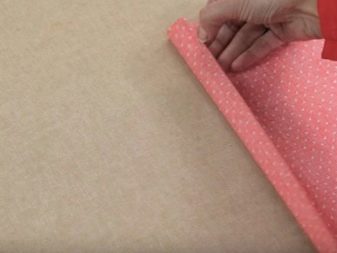


Processing "Hong Kong"
By using this method of overcasting, the seamstress will end up with a fairly nice and even stitching. This option is suitable for any fabric. You can overlap with a lining. As a result, all seams are closed.
In addition, the lining itself is also fixed with a seam on the product. In this case, you must definitely pay your attention to the fact that the lining material was the same that was used for sewing the product. This is necessary in order to avoid further deformation of the tissue.
The lining should be 1.5 centimeters wider than the main part. When everything is ready, the lining and the main part of the product must be put right sides together. Then they need to be chopped off with pins, and then stitched. Next, both parts must be turned out, and then carefully ironed. Now the lining needs to be carefully swept along the seam line, and then sewn on a typewriter.
When both parts are processed, they can be folded right-side up and also cleaved with pins. It remains to make the last line and iron the allowances. The finished edging looks very nice, especially if the color of the threads is perfectly matched to the color of the lining.




As you can see from all of the above, replacing the overlock when sewing is not difficult. Therefore, people who sew at home do not need to buy such an expensive tool. It is enough to choose the most acceptable option for yourself, making an overcast either using a conventional sewing machine, or by hand.
You can learn how to process a cut of fabric without an overlock in the video below.








